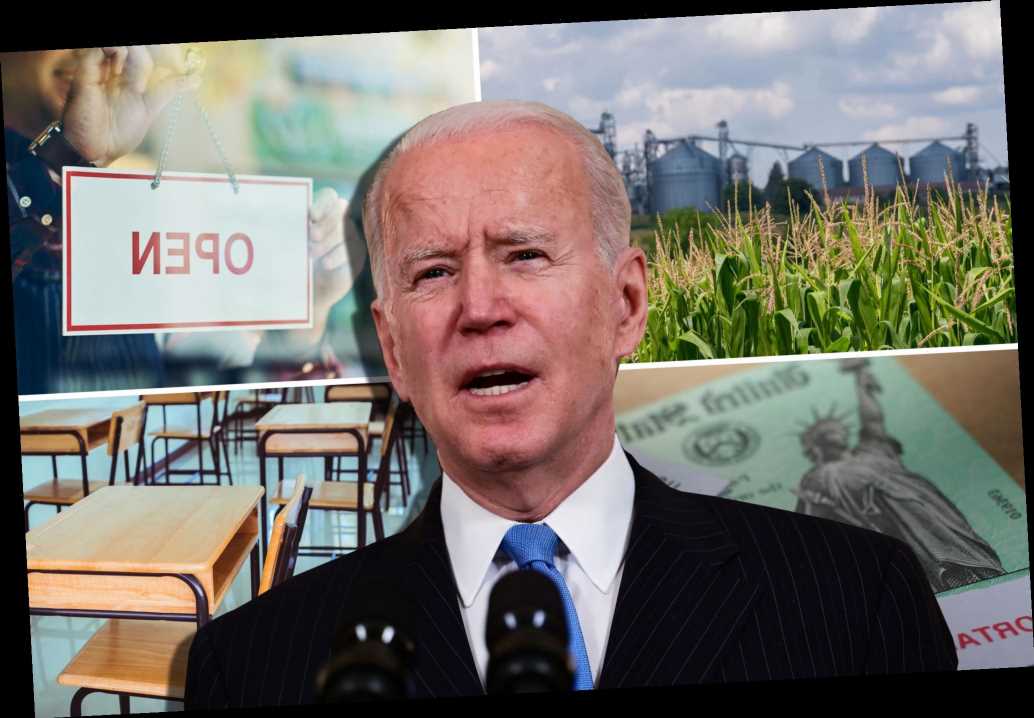Some of the notable elements of President Biden’s stimulus bill, set for a vote in the House of Representatives on Wednesday:
Checks
Adults earning up to $75,000 per year and couples clearing up to $150,000 would receive one-time stimulus checks of $1,400 per person. Those earning between $75,000 and $80,000 and couples making double that get smaller checks. Individuals who make north of $80,000 — $160,000 for couples — won’t get a check. People who are heads of households get $1,400 checks if they earn less than $112,500. Their cutoff is $120,000.
Perks for parents
Parents earning up to $75,000 annually — $150,000 per couple — would receive additional $1,400 checks for each dependent child. Unlike past stimulus checks, parents over the income limits are excluded. The annual child tax credit is increased to $3,600 for kids under 6 and $3,000 for children between 6 and 17, up from the current $2,000. The same income restriction applies.
Schools
More than $120 billion would be earmarked for K-12 schools. The Congressional Budget Office estimates that more than 90 percent of the funds would not be spent in 2021 because aid approved for schools last year remains unused.
Leave for feds
Fifteen weeks of paid leave for federal workers, including US Postal Service employees, would be allowed for COVID-related reasons, including care of kids who don’t have school or day care.
Unemployment
A $300-per-week federal supplement to state unemployment benefits extends through Sept. 6
Business aid
About $25 billion would be set aside for a new grant program specifically for bars and restaurants. Businesses would get up to $10 million each to cover the gap between 2019 and 2020 revenue. The Paycheck Protection Program, which is currently taking applications for second-round loans, would get an additional $7 billion and more nonprofit organizations are eligible. Abortion provider Planned Parenthood would remain ineligible. Another $15 billion would go to the small business Emergency Injury Disaster Loan program.
State budgets
Of $350 billion in state and local aid, states and DC would get $195 billion, cities and counties $120 billion, while $10 billion would go toward infrastructure. New York City is expected to receive about $6 billion, while New York state would get more than $12 billion.
Green for farmers
Some $10.4 billion would be earmarked for agricultural programs, including an estimated $4 billion to $5 billion to pay off the debts of racial-minority farmers — up to 120 percent of their outstanding loans.
Health insurance
The bill includes health insurance subsidies for workers who lost their jobs but can remain on employer policies for 18 months. The government would now reimburse those premiums through September.
Local aid
The bill includes $6.5 billion for the MTA; $418 million for NYC-area airports, including $218 million for JFK and $107 million for La Guardia; $9 billion for NYC K-12 schools; $358 million for NY Broadband Investment Program; and $1.7 billion for Amtrak to maintain operations, including at Penn Station
Fighting COVID-19
Some $75 billion would go toward pandemic-related medical costs, such as testing and vaccination efforts. Rural medical providers would receive an added $8.5 billion in funding.
Rent and mortgage assistance
There would be $20 billion for state and local governments to cover unpaid rent and utility bills for low-income people, and another $5 billion to help those at risk of homelessness and $5 billion for vouchers for those already homeless. Nearly $10 billion would go to the Treasury Department’s Homeowner Assistance Fund to help eligible homeowners pay mortgages.
Share this article:
Source: Read Full Article












